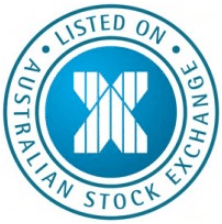Chris Weston, Chief Market Strategist at IG Markets
We go into the business end of the week with the prospect that four key event risks could really shape all asset classes over the coming weeks and months.
Perhaps the two events I see as having the least dramatic impact on global markets will be Alibaba’s IPO, although stock traders and investors will be focusing on this closely. The other one is the ECB’s first allotment of the Targeted Long-Term Refinancing Operation funds on Thursday (19:10 AEST), which, despite the compelling rates on offer should see around EUR150 billion borrowed – some 37.5% of what the it could potentially take-up.
EUR/USD could squeeze this week to the 1.3050 area on a low take up of funds on the idea that the central bank’s balance sheet may struggle to reach the targeted 2012 levels. This event could also play a role in whether we see European bonds sold.
We can also throw in moves in iron ore and rebar, and with a nice rebound in spot prices yesterday (especially in AUD terms), traders are asking is this a good time to wade into iron ore names? My personal belief is that names like Fortescue Metals may see a slight bounce, perhaps to the A$4.28 area (or the 38.2% retracement of the fall from the July high); but you are simply making a play on stimulus and I am personally sceptical we get broad-based reserve ratio requirement easing from the PBOC or anything sizeable on a fiscal level. Recall Premier Li said in Davos that the government will rely on targeted easing and not strong and aggressive monetary easing.
AUD/USD short covering potential
Still, iron ore and rebar futures have moved higher again today and are indicative of a higher spot price in today’s settlement. AUD/USD has seen some modest short covering, but everyone is lining up prepared to jump on a reasonable rally in the pair. 0.9080 is the downtrend drawn on the hourly chart, so perhaps this could be a good area to look at. However, the price of iron ore or even China’s equity market has little to do with price action in this pair right now in my opinion.
If you want to know where AUD/USD is headed, traders need to look at implied volatility and US bond yields. This is the same with emerging markets, developed markets, corporate credit and fixed income. And one thing is consistent – the perception of change in the language of the Federal Reserve, which in turn has caused a move higher in yields. Mix this with higher volatility and could see emerging markets underperform and carry structures unwound.
Supporting the currency to a degree was the increased concern around the property market from the RBA minutes. While it is not the RBA’s job to impose macro-prudential tools, it does suggest it is firmly on hold. There was no reaction in the Australian equity market, and after pulling back 200 points since September 5, it has broken the 2013 uptrend and is also testing uptrend support drawn from the March low. The index does look a little oversold, so it could find support at the March trend, but it’s by no means at extremes. A break of this level could be key though and while I have been bullish for a while I am starting to become much more cautious on global equity markets and feel the probability of a ‘correction’ has increased.

US bonds the centre of the financial markets
So, with the US bond market at the centre of the financial world, dictating flows in every other asset class (even down to sentiment around holding micro-cap equity), Wednesday night’s (04:00 AEST on Thursday) FOMC meeting is critical. Will the Fed alter its language around the ‘underutilisation’ of the labour market? This change seems 50/50, although after only adopting this view in July it seems a little early to change this just yet.
Will the Fed alter its stance that ‘it likely will be appropriate to maintain the current target range for the federal funds rate for a considerable time after the asset purchase program ends’? This is the area which divides the market and is fairly binary in the sense that if it continues to hold this view, then US bonds will be bought, the USD should fall and global markets should find buyers. On the other hand, amending this view could be taken negatively by the bond and equity space.
The other issue is the projection the board gives where it sees the 2017 funds rate. The importance of this should not be understated as this will be used by money managers to price longer-term assets.
We then of course have the Scottish referendum on Thursday, which is still so close to call. However, with the exception of some options structures put in place by traders to capture higher volatility, price action in equities, gilts, short-sterling futures and sterling are not reflective of a market positioned for Scotland voting to leave the United Kingdom. The Commitment of Traders report highlighted this on Friday where futures traders actually increased sterling gross long positions. It seems the ‘no’ camp could be getting a boost from the raft of celebrities and key political names reaching out to keep Britain united, however is it too much too late and where will global markets be if Scotland votes for independence and the Fed does alter its language?
